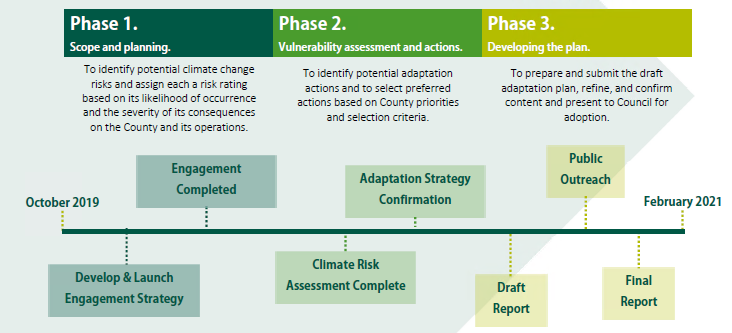Climate change risks to Norfolk County were identified and prioritized through public and stakeholder engagement.
During this phase, residents, businesses, stakeholders, and County staff were invited to share their experiences related to climate change to assist with the identification of the risks and potential solutions.
The risks were then prioritized by the Norfolk County Climate Change Adaptation Committee utilizing a high-level feasibility analysis completed by WSP Canada Group with input from Norfolk County staff.





